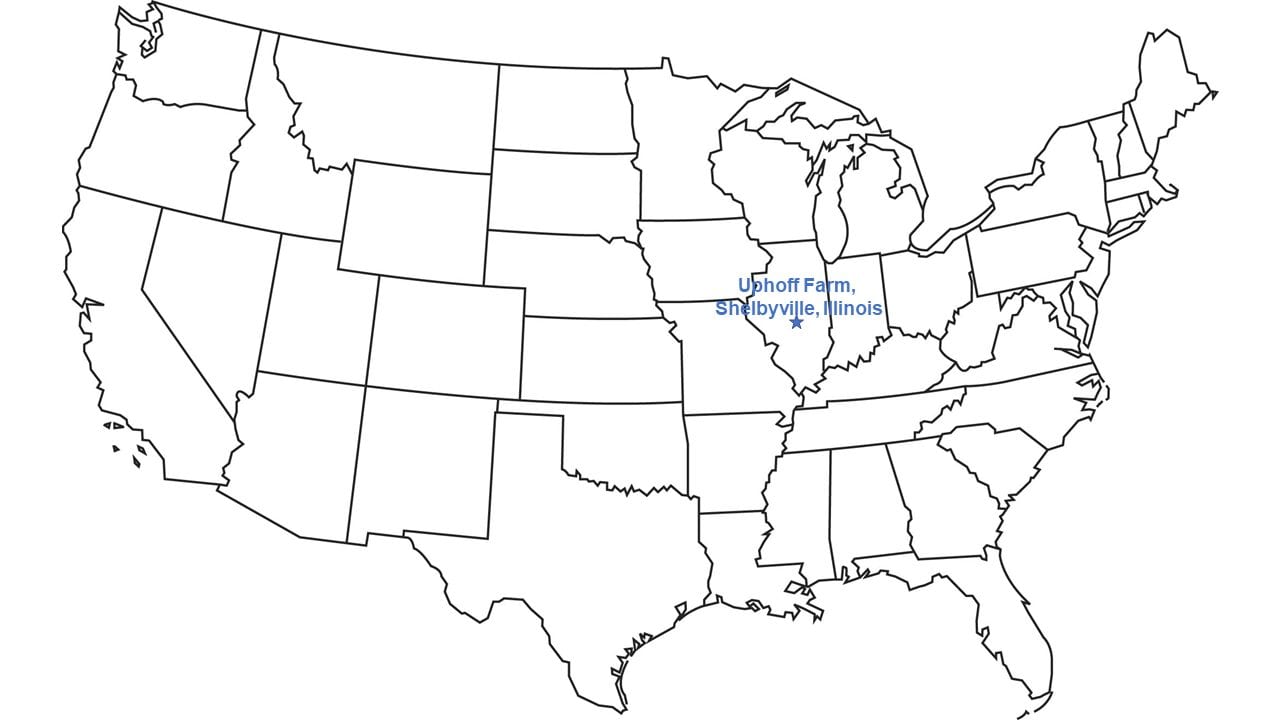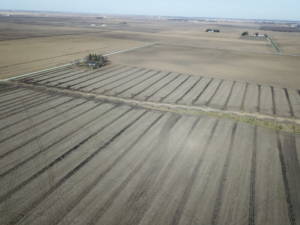 Plenty of relatively warm, dry weather, at least for our area of the heart of the U.S. Midwest, allowed us to finish the fieldwork we had planned for this fall. We finished fall tillage and fertilizer application the last week of November. And that’s just the beginning of our preparation for next spring.
Plenty of relatively warm, dry weather, at least for our area of the heart of the U.S. Midwest, allowed us to finish the fieldwork we had planned for this fall. We finished fall tillage and fertilizer application the last week of November. And that’s just the beginning of our preparation for next spring.
As mentioned in my last update, I am experimenting with cover crops for the first time this fall, to see how that will impact next year’s crop. I’ve discovered a steep learning curve for planting a small-seeded grain, cereal rye, with a standard row-crop planter. I am using the equipment I already have to see if cover crops can fit into our system, rather than investing in additional equipment to broadcast or drill the cover crop.
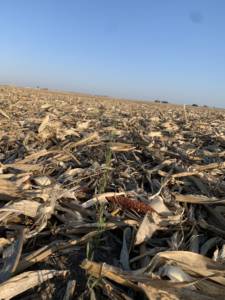 While figuring out how to correctly adjust my planter for the desired seeding rate, I ended up needing more cover crop seed than expected. In addition to seeding a cover into corn stubble in about 16 hectares, or 40 acres, of a split field, I also planted the cereal rye cover into about 5.6 hectares, or 14 acres, of soybean stubble.
While figuring out how to correctly adjust my planter for the desired seeding rate, I ended up needing more cover crop seed than expected. In addition to seeding a cover into corn stubble in about 16 hectares, or 40 acres, of a split field, I also planted the cereal rye cover into about 5.6 hectares, or 14 acres, of soybean stubble.
So far, the cover crop has germinated and emerged fairly well. With high temperatures forecast between 2° and 7°C, or 35° and 45°F, for much of December, the cover crop continues to grow. It’s fun to see something green at this time of year. However, we haven’t gotten much rain this fall, unlike the past few years, so we are concerned about sub-surface moisture levels. Next spring, I will probably rely on herbicide to burn down the cover crop before planting these fields, though I am considering other options.
To get ready for next spring, we’ve also been working on equipment maintenance and repairs. We focus on preventative maintenance to minimize in-season breakdowns. We cleaned up our tillage equipment, greased it and checked for worn-out or broken parts that we didn’t have time to fix while we were in the field. We do as much as possible to repair parts ourselves. For example, when we learned the cost of new parts to address worn-out pieces on our field cultivator, we figured out another way to fix those pieces relying on help from local welders instead of buying new parts. We saved about $3,000 with this repair, and have the cultivator ready for next season.
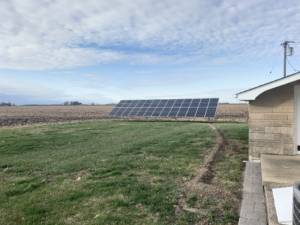
We also want to be ready to go next spring. We cleaned up the planter after I seeded my cover crops and installed soybean plates. We checked all its pieces, replaced a computer sensor that caused problems while planting the cover crop and rebuilt a leaky cylinder. We also checked all the adjustments to be sure it is ready to plant soybeans next spring.
I am convinced by years of data I’ve seen that planting soybeans before corn in our region will lengthen the soybean growing season and allow the crop to take more advantage of the light to yield more. At the same time, waiting a bit longer to plant corn will allow soils to warm up more and promote more even emergence, which should improve corn yields. I had hoped to try that this year, but the weather – and uncertainty from my Dad and Grandpa – didn’t allow us to do it.
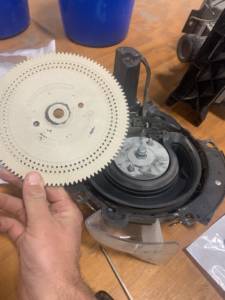 I want to keep trying new things. In late November, I had solar panels installed at my house. My rural house is fully electric, including heat, so bills can get high. With the electricity generated by these panels and the rebates and incentives for using clean energy, I expect to reduce electric bills and see the panels pay off in 3 or 4 years. If they work well at my house, we may consider installing some for the farm, as well. And I’ve had lots of interest from neighbors.
I want to keep trying new things. In late November, I had solar panels installed at my house. My rural house is fully electric, including heat, so bills can get high. With the electricity generated by these panels and the rebates and incentives for using clean energy, I expect to reduce electric bills and see the panels pay off in 3 or 4 years. If they work well at my house, we may consider installing some for the farm, as well. And I’ve had lots of interest from neighbors.
I have also been catching up on office work and hauling corn to a nearby processor. I expect to start delivering soybeans in January or February. I will continue hauling this year’s crops through the winter and spring to be ready to store 2021 crops next year.
A year ago, I wanted to forget 2019, as it was a challenging year. But 2020 has been even harder in some ways. Despite the global pandemic and other issues in the U.S., I enjoyed sharing our crop cycle: hauling grain, planting, managing weather like rain delays, growing crops, protecting yield and quality, monitoring yield potential, preparing to harvest, harvesting and doing fall fieldwork.
My daughter turned 1 in November, and because of the challenges of 2020, I spent that whole year with her, with very few distractions. That allowed our family to make lots of memories that I will appreciate when I look back on this year. Family and farming – I wouldn’t have it any other way.
